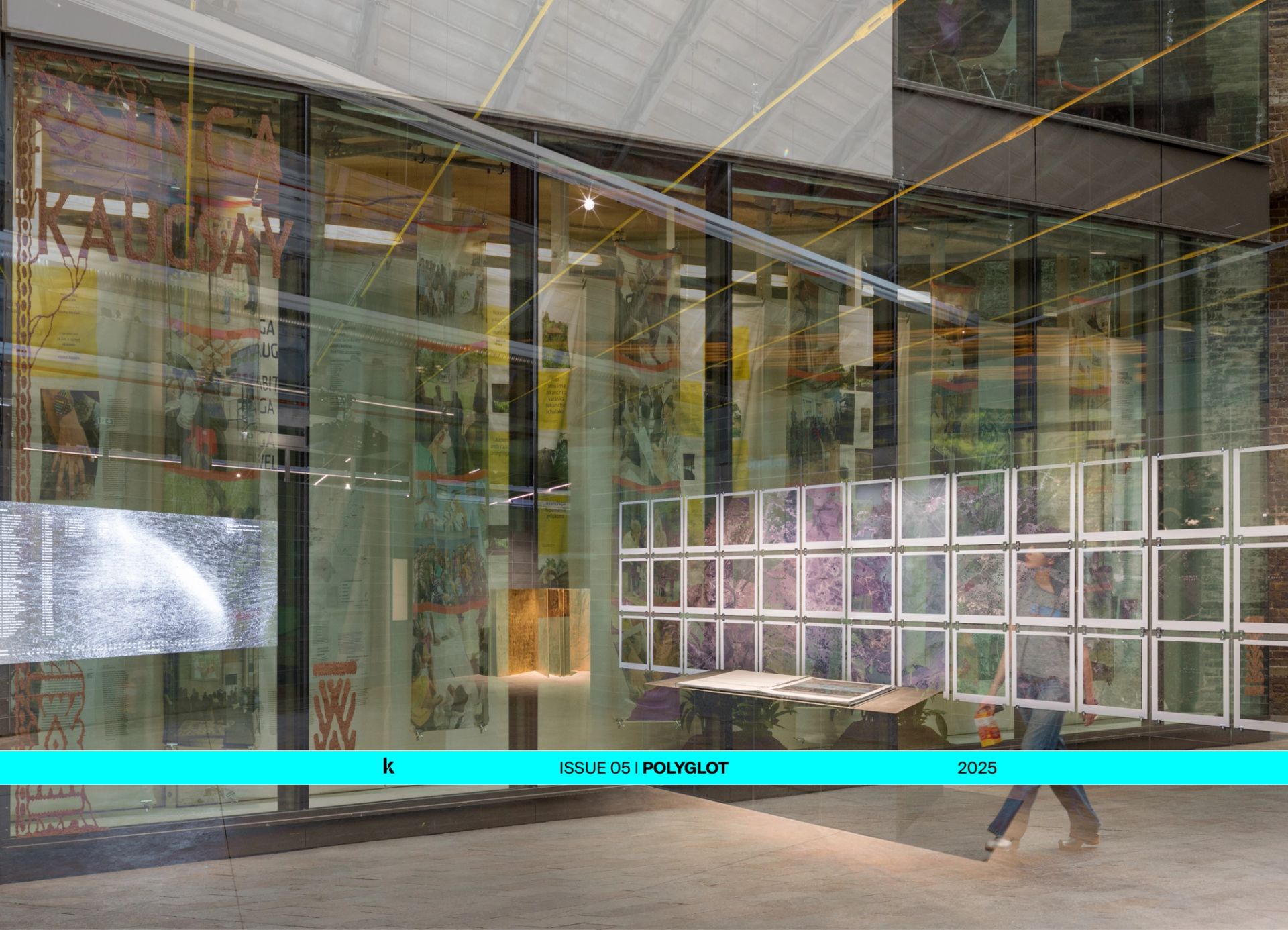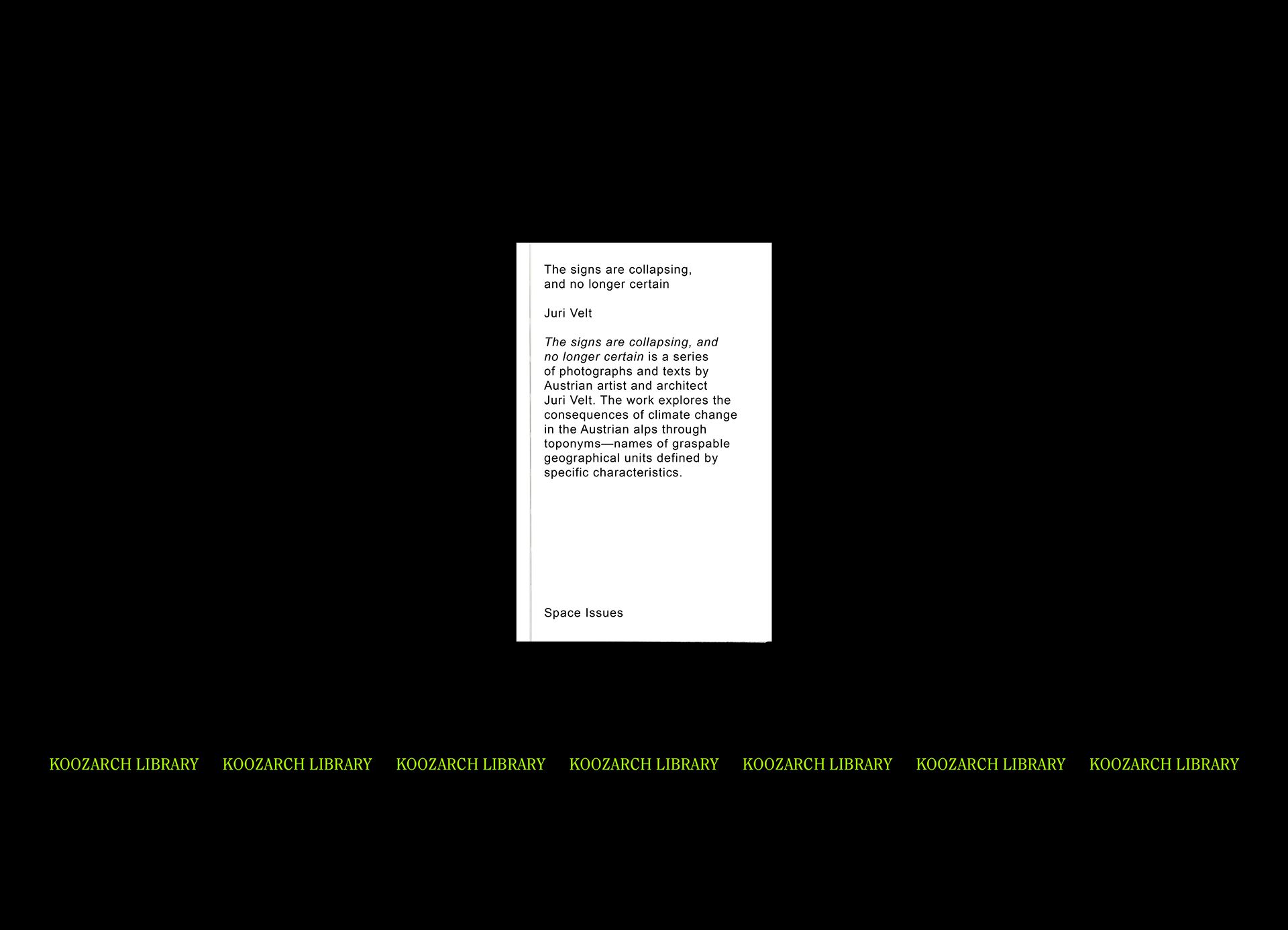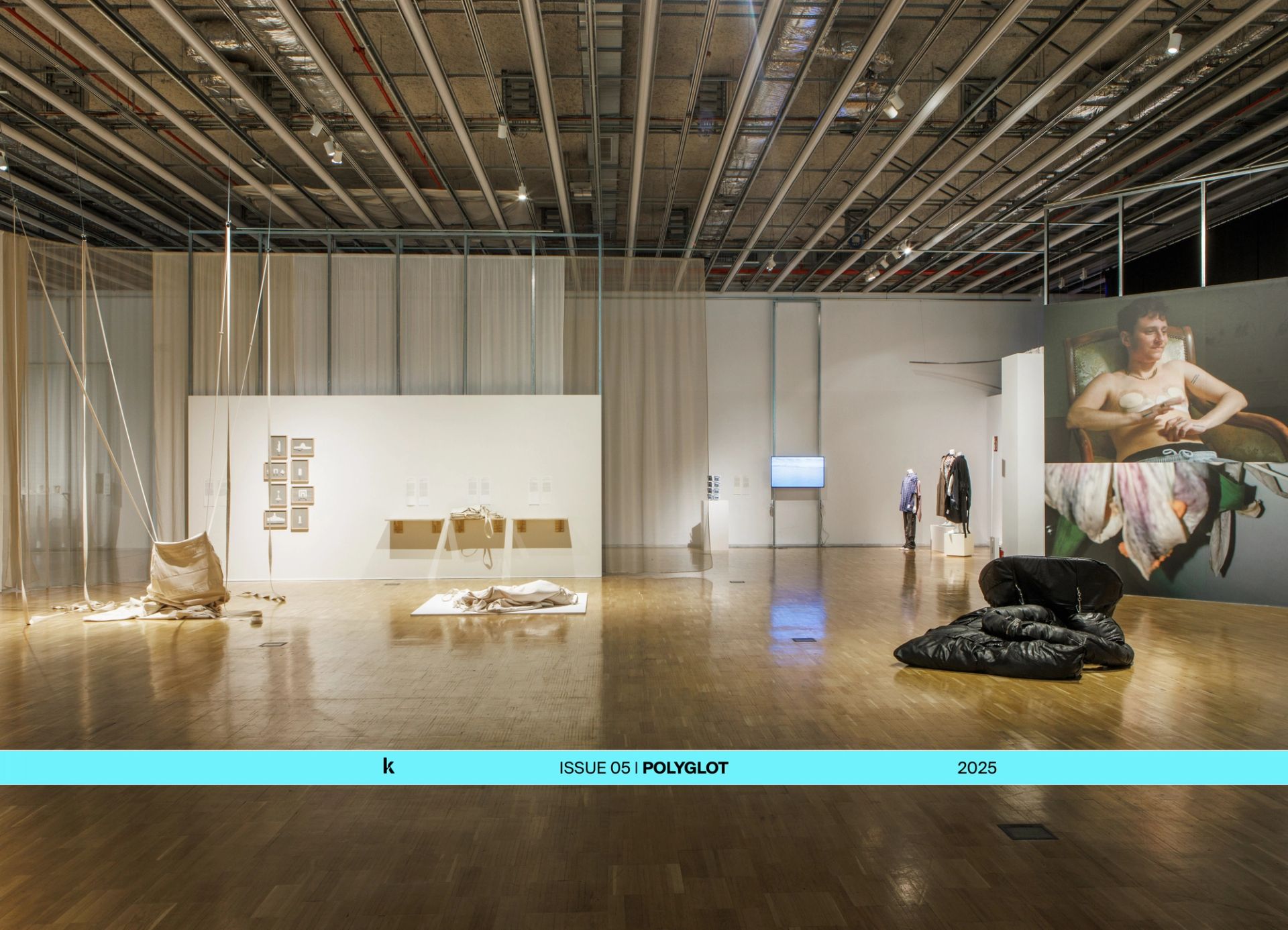When architects talk about 'excellence', 'sustainability', 'well-being', 'liveability', 'placemaking', 'creativity', 'beauty' and 'innovation', what do they actually mean? In architect, verb (Verso 2023) Reinier de Graaf punctures the myths behind the debates on what contemporary architecture is and skewers the doublespeak and hot air of an industry in search of an identity in the 21st century. In this interview with the co-founder of AMO, we talk about the divorce between words and meanings, the urgency for dialectical discussion, and the importance of language to rediscover the essence of design.
KOOZ In your first book, Four Walls and a Roof, you challenge the myths within the architecture profession. In architect, verb, you aim to debunk the myths projected onto architecture by the outside world. These two books represent a portion of your extensive career, which includes your work with OMA and the think tank AMO, which you co-founded in 2002. How do you approach the medium of the book as a space for architectural agency as well as a means of engaging with a broader audience beyond the insular architectural community? How does the built and unbuilt work relate to and inform each other?
REINIER DE GRAAF The answer to this question is partly in the introduction you give about KoozArch. I think there is a similar motivation for me to write as the one you outline there. But I am not so sure what you mean by architectural agency. I find ‘agency’ quite a difficult term. As architecture is so manifest, so propositional, I would say architecture has agency by definition. I sometimes wonder whether the frequent mentioning of the word isn't indicative of something else.
You have correctly stated that my first book was about debunking myths cultivated by architects whilst the last book is about debunking myths projected onto architecture by others. Combined, the two indicate that architecture exists in a space of wonderful misunderstanding between its ideas and the world in which it operates. By humorously highlighting these misunderstandings, I hope to bridge that gap. This is also why my style of writing is very deliberately accessible for mainstream readers. Of course, my last book takes the piss out of the use of jargon, but I'm very interested in making architecture a little bit more known and beloved in the mainstream while making it perhaps a little bit more aware of the mainstream. I think that only when you engage with the mainstream, you can hope to have relevance, or agency, as you put it.
"Architecture, it seems, has landed itself on the wrong side of history. Admittedly, confronted with the most pressing issues of our time the discipline has not made a good showing: complicit in escalating house prices, an integral part of the largest CO2-emitting industry, and all too oblivious to the political machinations it helps perpetuate."
- Reinier de Graaf, from architect, verb.: The New Language of Building (Verso, 2023).
OMA is quite a big firm with quite a bit of ideology and ambitions beyond simply keeping the firm running and financially healthy. That is an increasingly rare combination today as the practice of architecture seems to have gone through a bifurcation. On the one hand, there are big firms that forego ideology for the sake of their size and yet have an impact. On the other hand, there are small firms who forego size for the sake of a cultivated ideology, which then misses an impact. For better or for worse, OMA embodies this tension. This is the creative tension which I experience in my work and which I try to voice through writing—writing that is expressly not moralistic. That is somehow an accurate reflection of those dilemmas, some of which you encounter when you pursue both.

Reinier de Graaf, "architect, verb.: The New Language of Building" (Verso, 2023), book cover.
KOOZ Beyond the use of words, the architectural discipline heavily relies on drawing as another form of language. Yet your books don’t rely on that, to the point that architect, verb is totally devoid of any kind of architectural drawing or representation. Why so?
RDG Architect, verb is ultimately a book about language and measurements. As such, it only contains text. You've probably seen that there are some pages completely filled with small italic text. The idea was to create a book where text illustrates text, either in the form of these continuous fact streams or dictionary definitions. It’s an idea that builds upon my previous publications. Throughout my books, I make it a point to reflect on language.
Going back to your first question and the engagement with the mainstream, this is also the reason why I wrote a novel. The Masterplan is deliberately written in a style that allows you to take it on holiday and read it by the swimming pool. It is the soft story of an architect who meets his nemesis—a classic story with the structure of a classic novel. The format also allowed me to explore my consciousness and say a lot of the things that cannot be said in books where you have a zillion fact checkers on your back. The irony is that the book that tried the most to engage with the mainstream actually sold the least.
"Once a discipline of ideas—a domain that helped formulate standards—architecture is progressively expected to comply to standards imposed by others."
- Reinier de Graaf, from architect, verb.: The New Language of Building (Verso, 2023).
KOOZ The original subtitle of architect, verb—"The ultimate guide to world-class award-winning creative innovative, sustainable, liveable and beautiful buildings that foster a sense of place and wellbeing"—directly references the checkboxes often found in European tenders. Throughout the book, you argue that many of these terms have lost their original meaning—if they even had one in the first place. You explore how architects are not only told what they ought to be doing but also how this vague terminology complicates matters. To what extent does this phenomenon stem from the idiosyncrasies of the English language and its ability to detach words from their meaning? Could you provide an example of one word and its misuse?
RDG The term I love the most is placemaking. It is the subject of a chapter where I try to figure out its meaning for myself and I fail. It's an epic journey towards failure.
The word that most clearly illustrates this divorce between meaning and word is, I think, liveability. The chapter on liveability is mainly centered on Vancouver, where in the name of liveability, the city has undergone a transformation which has made it so expensive that it is now unaffordable and, for the most part, empty. Because of speculation, Vancouver has a lot of empty apartments, to the point that the municipality had to introduce a vacancy tax. So, you have a very livable city where the vast majority of people cannot afford to live.
Liveability indexes as those featured in The Economist, Mercer and Monocle are really just checkbox lists that investigate the cost of living to determine expat wages for a mobile audience who is travelling the world, almost consuming the place where they are as just another consumer product.
KOOZ Talking about Vancouver, I was quite surprised to find Jane Jacobs mentioned repeatedly throughout the book. What is the reason for that?
RDG Jane Jacobs was a viciously good person and too often throughout history good intentions have paved the way to hell. Looking at Vancouver, in the 1960s there were plans for the creation of a big freeway which would have demolished neighbourhoods such as the old Chinatown. There was a protest movement against that freeway plan which acquired a lot of political backing to the extent that the movement became a political party which ultimately won the elections, leading to the safeguarding of the neighbourhood. Later, the 1986 Expo was organised drawing a lot of attention to the city. The very success of the city and the worldwide promotion of the Vancouver model by civil servants like Larry Beasley, to the point that it became an explicit formula, led to escalating real estate prices not only in Vancouver but also wherever the model has been applied. Ironically, Jane Jacobs can be found at the origin of what ultimately became outright gentrification. She opposed the soulless city of the 1950s dominated by the car, but in the end her ideas took the shape of the gentrified city, liveable for the happy few. That is the tragic course that her ideology took, of course largely unintended by her.
"The overriding quest of this book inevitably comes from within—a quest for architecture to be architecture again, written in the sincere hope that [...] our profession might one day re-emerge as an independent and critical discipline."
- Reinier de Graaf, from architect, verb.: The New Language of Building (Verso, 2023).
KOOZ The book also argues that the absence of antonyms for these terms raises suspicion, as it undermines critical thinking at the core of the discipline. What are the problems associated with this indirect censorship? What happens when one does not conform to the expected language (when you don’t talk the talk)?
RDG Censorship, either imposed or implied, is always bad. We traditionally debate in a dialectical manner through a confrontation between opposites and then potentially those opposites are resolved in a form of progressive insight. When antonyms are impossible, you cannot have a dialectic. You cannot think. Liveability, beauty, well-being, happiness are all essentially ephemeral terms whose value is unmeasurable. Nevertheless, they are all associated with the most elaborate measurement systems. When liveability is associated with a score that fixes its definition, it makes any discussion impossible. It replaces a discussion by a race to the top and any race to the top is very often also a race to the bottom. That is tragic, yet it is the reality of the liberal economy. Like you were saying, there are tenders where you have to say how you comply with these terms, filling in elaborate lists, which turns any design work a kind of foregone conclusion.
As a designer, I think one has the moral obligation to give people what they want, yet an even bigger moral obligation is to give people things they didn't know they wanted. That is the essence of original design, the essence of how design progresses. People only realise they want it when they see it. Which architect in the world would want to design buildings that are unliveable, ugly, unsustainable, or make people unhappy? But words are measured, there is no choice but to comply. And for me, this is part of an ever more oppressive reality.
Throughout the world, we are witnessing the resurgence of dictatorships. We see democracies turning around like in Russia, Turkey, Hungary and Israel, where presidents or prime ministers are becoming royalty-like rulers for life. The good thing about an authoritarian regime, however, is that the source of oppression is locatable, and, you know, you can just poison the dictator. When the source of oppression is unclear, what do you do? Do you poison everybody, or do you write your own poison in a yellow book?
KOOZ The New European Bauhaus calls “all of us to imagine and build together a sustainable and an inclusive future”.
RDG The New European Bauhaus is the perfect illustration of what I’m picking on in my book. It's deeply sad. They have almost the same subtitle, but without irony. We live in a world where obviously ironic statements are applied without any irony.
KOOZ The book concludes with the introduction of Profspeak, the official language of the 21st century, where terms like "people-first design" are included, culminating in the powerful statement "Loquor, ergo sum" (I speak, therefore I am). One could argue that architecture ultimately strives to defy language, and that creativity often goes unspoken. Could one make the case that the only real opportunity for architecture to regain its independence and criticality is for architects to ultimately shut up and cut the bullshit?
RDG Maybe. But I don't think they will ever be able to do it. I am not an example of an architect who shuts up and I don't think I'm entirely free of bullshit either. I think architects should speak – but with, and on, their own terms. Much of the language that has been tragically imported into architecture from the outside is then co-opted and owned by architects in a very unhealthy manner. The best thing would be to have a moratorium on the ten terms listed in my book and maybe a few additional ones, and then on the entire Profspeak dictionary. You mentioned “people-first design.” “People-first design” makes “design” redundant, because it implies that design doesn’t consider people at all. And that whoever is associated with design is by implication a bastard that doesn't care about people. Like the smart city. Antonyms are forbidden, but they are forever implied.
KOOZ The smart city didn’t make it into Profspeak…
RDG It's too common. A zillion terms didn't make it in because of the limited length of the book. We had the idea of making Profspeak a collective project with numerous contributors and actually have it be the size of a real dictionary. But you know, the point is made.
Bio
Reinier de Graaf (1964, Schiedam) is a Dutch architect and writer. He is a partner in the Office for Metropolitan Architecture (OMA) and the co-founder of its think-tank AMO. Reinier is the author of Four Walls and a Roof: The Complex Nature of a Simple Profession and the novel The Masterplan. He lives in Amsterdam.
Federica Zambeletti is the founder and managing director of KoozArch. She is an architect, researcher and digital curator whose interests lie at the intersection between art, architecture and regenerative practices. In 2015 Federica founded KoozArch with the ambition of creating a space where to research, explore and discuss architecture beyond the limits of its built form. Parallel to her work at KoozArch, Federica is Architect at the architecture studio UNA and researcher at the non-profit agency for change UNLESS where she is project manager of the research "Antarctic Resolution". Federica is an Architectural Association School of Architecture in London alumni.





